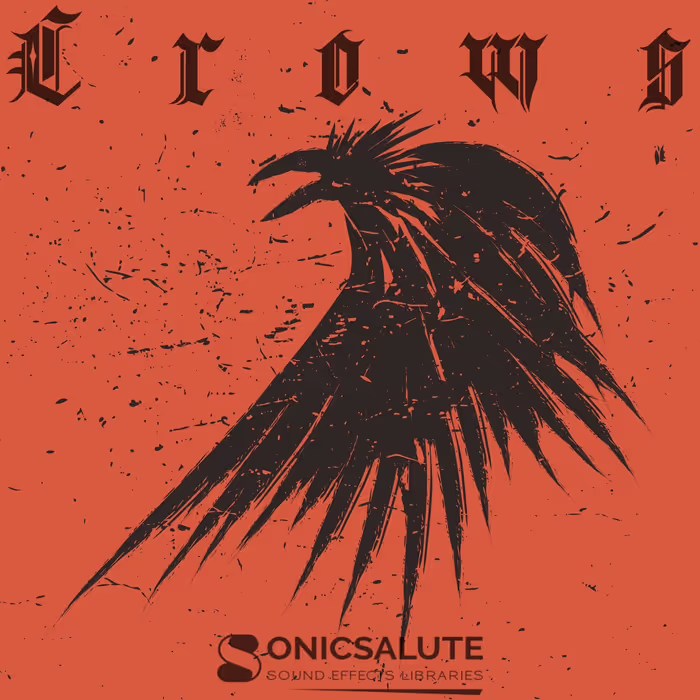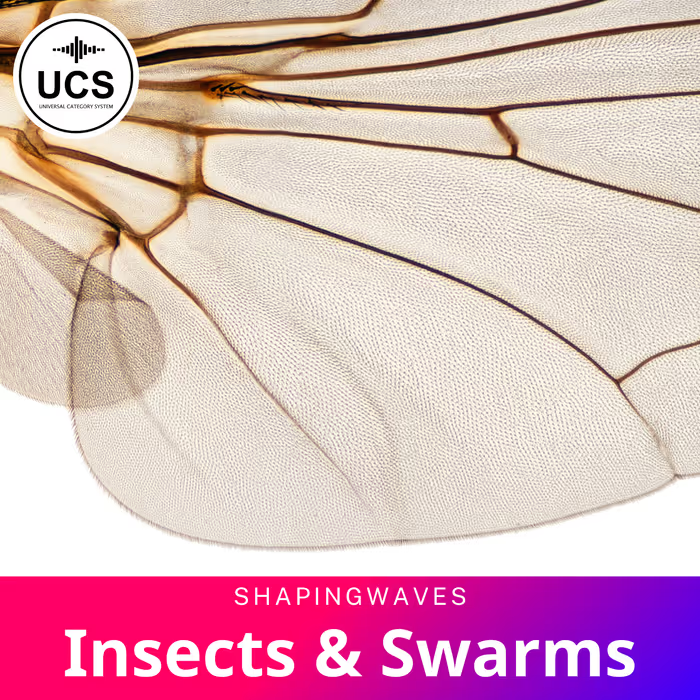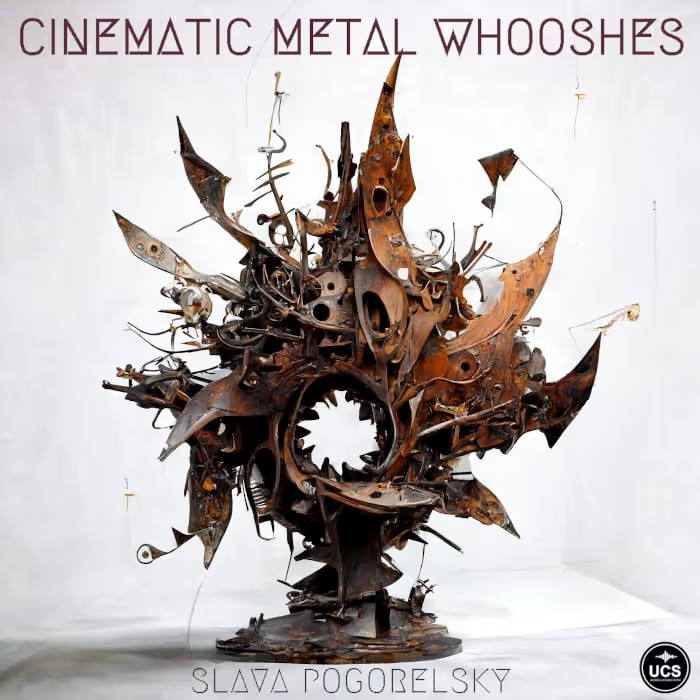Now I understand why drivers wear gloves. The race sequences in director James Mangold’s Ford v Ferrari made my palms sweat just sitting in the theater seat; I can’t imagine the condition of Christian Bale’s (who plays racecar driver Ken Miles) as he sat behind the wheel of that GT40.
The film conveys the speed and peril of the drivers so tangibly that you feel like you’re in the car too. And half of that illusion is the success of the sound. The fluidly-cut engine revs and whines, the suspension creaks, the little metal rings jingling on the inside of the car window — all carefully recorded, designed, and mixed to make you feel the power of these machines.
But there’s another powerful element to this film — friendship. The story is about car designer Carroll Shelby (played by Matt Damon) and racecar driver Ken Miles working together to achieve the seemingly impossible task of creating a Ford car capable of beating a Ferrari in the race world’s most grueling event, Le Mans. The sound team needed to support the emotion of this story and not just blast the audience with engines.
Here, supervising sound editor Don Sylvester, sound designer/re-recording mixer David Giammarco, and re-recording mixer Paul Massey talk about recording vintage race cars, designing engines using layers of sound, and finding the right balance emotionally by weaving together music and effects.
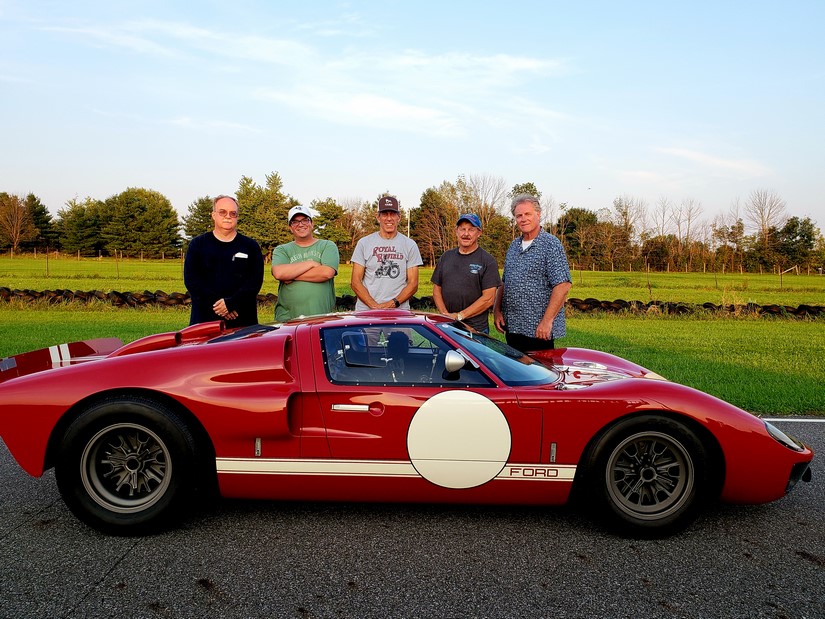
Did you have an interest in cars before working on this film?
David Giammarco (DG): I grew up around them and worked on them. It was huge to be a part of this film. I was thrilled.
Don Sylvester (DS): Any sound person worth his/her salt — who’s spent a lot of time working on sound effects — knows the importance of cars. As a guy, I wasn’t really into cars that much. Until I met the cars, I took them as just another job. But when I met these beautiful machines it was incredible. It changed my life. It was pretty amazing.
Paul Massey (PM): I did rally racing when I was a teenager. It was very short-lived because we didn’t have any money. But I always enjoyed it.
DS: Director James Mangold isn’t a car guy, and he’s the first to admit it. He was drawn to the relationship between Carroll Shelby and Ken Miles. Yes, this is a racing film but he doesn’t want people to think this film is all about cars because he’s invested a lot in the characters and their storyline, and he found that to be the most compelling thing. And then the cars second.
Director James Mangold isn’t a car guy, and he’s the first to admit it. He was drawn to the relationship between Carroll Shelby and Ken Miles. Yes, this is a racing film but he doesn’t want people to think this film is all about cars because he’s invested a lot in the characters and their storyline…
PM: Jim [Mangold] is a great storyteller. He always is with all of his films and that’s a real skill that he has. That shines through in this film whether you love cars are not.
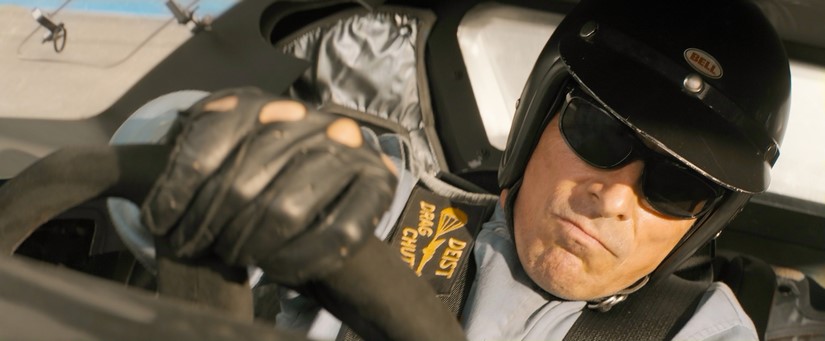
There are so many vehicles in this film, a reported 460 or so. I heard that you recorded a ’64 GT40 in Ohio and a ’59 Ferrari (12-cylinder) in Atlanta. What other cars did you capture for this film? How about Ken’s Cobra in the first race? Shelby’s blue Cobra? What were the cars you recorded and what were your mic setups like?
DG: We recorded the blue Cobra that Shelby drives. Ken is racing one of Shelby’s Cobras in the first race; that was recorded as well. We recorded Shelby’s red Porsche that is in the beginning of the film.
For the miking on the GT40s and the Ferraris, there were mics on the interiors of the car, in the engine compartment, miking of the exhaust, miking the transmission housing, and then exterior mics placed all around the track to capture the bys, aways, and pull-ins and stops.
John Fasal, Eric Potter, and Jay Wilkinson went out recording all these cars. John also went up to Laguna Seca to a vintage car racing event. There were cars of that period racing around the track which was used as beds and ambience tracks for some of the races in the film. They recorded a Mustang and Cobra up there as well.
DS: We had so many tracks and when you have 48 or 24 tracks of an engine you can feature some of the sounds to make it sound like a completely different engine depending on the need. I think that’s what we did to distinguish between the two different GT40s — we had a 289 and a 427. We didn’t have two GT40s to record so we just emphasized some areas of the engine over the others to create a GT40 that sounded less powerful than the other. The GT40 we recorded was the 427 so there wasn’t a problem getting that one to sound powerful in the film. We just took those recordings and created a smaller sounding engine for the 289.
The GT40 we recorded was the 427 so there wasn’t a problem getting that one to sound powerful in the film. We just took those recordings and created a smaller sounding engine for the 289.
DG: We also recorded some of the 289 engine sounds, which was the engine and exhaust notes of the first incarnation of the GT40 which had the small block V-8s in it.
DS: We spent the majority of our time recording the GT40 and the Ferrari. The other race events were less critical, and those sounds were easily found. The difficulty was in getting the two star cars of that era and capturing the sound that we wanted and needed for this film. That was where we spent most of our time. We spent a few days recording each of those cars.
DG: We had car recordings from previous shows as well, like a period Austin Healey and some MGs. We used those for some of the incidental cars in the races, especially for Le Mans ’59.
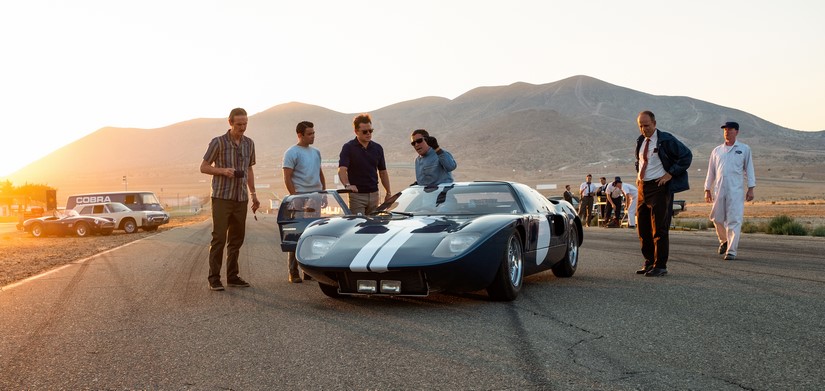
How did you build the car engine sounds for the film? Did you cut and layer elements in Pro Tools or use a sampler to ‘play’ them?
DS: It was laboriously cut. This was not a performance we could do on a keyboard. Jay Wilkinson did the initial design on most of the engines, cars, and race sequences. Then Dave was the wizard who put it all together on the stage to make it sound individualistic, so we could tell the individual engines apart. When there were multiple cars in the scene, Dave would feature one car over the other. But this was cut frame by frame by frame.
…it was all created using original recordings of the cars, which were cut and layered.
DG: Jay [Wilkinson] did a tremendous amount of brilliant work putting the cars together. I had everything separate and I had multitracks of interiors and exteriors, from all these mics that we had on the cars — the GT40 and the ’59 Ferrari. That gave me the ability to go between all the different tracks and feature elements that would pop through best. But it was all created using original recordings of the cars, which were cut and layered.
Soundworks Collection interview: Ford v Ferrari is so much more than a race car movie. At its core, it’s a movie about a friendship, and about two men fighting for what they believe. In this episode production sound mixer Steven Morrow shares some insight to recording cars for Ford v Ferrari, his humble roots as an unpaid boom operator and his theories on why sound people are the nicest people on set.
What was your approach to extending those high rev sequences? Did you time-expand the sounds?
DG: At times they were time-expanded, and we cut to different takes.
When we recorded the cars we didn’t have a 6-mile track to whine the engines out at full RPM. We even thought about putting it on a rig and running it, but that never materialized. So it all had to be done editorially…
DS: When we recorded the cars we didn’t have a 6-mile track to whine the engines out at full RPM. We even thought about putting it on a rig and running it, but that never materialized. So it all had to be done editorially, and I think it came out okay.
DG: We were working closely with the picture department. They might cut to a tachometer peaking at 7000 RPM and then it could suddenly drop. We knew we had to hold the rev up to a point and then perhaps create a gear change. So there was communication about how things developed. Sometimes they’d have to change things for dramatic purposes, but sound-wise we might not have enough to sustain that sound.
DS: They’d add 16 more frames and it was like, “Oh no, what do we do?”
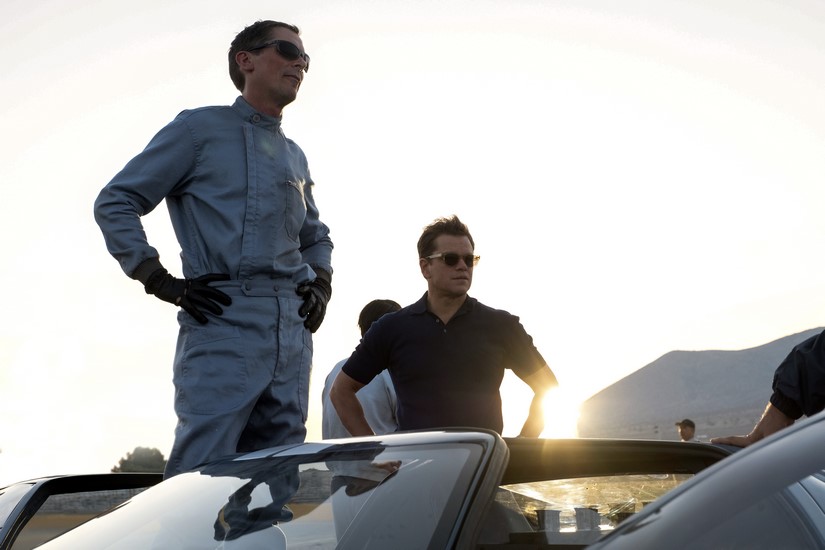
The race POVs make strong use of quick cuts, going from outside the car to inside and back again. But the engine sounds were really fluid on the cuts. It never felt like the car was suddenly in a different gear. What were your challenges in dealing with these quick perspective changes from a sound standpoint?
DG: What you’re talking about was the Bible of what we had to deal with. We knew it would be viewed that way; we knew it would be a disconnect for people if we didn’t make it sound like it was really happening, like that was the real engine going at the pace it was going. So that was always on our mind. That was our greatest challenge — to make these recordings of the cars, which weren’t doing what we needed them to do, sound like they were doing what we saw in the film.
That was our greatest challenge — to make these recordings of the cars, which weren’t doing what we needed them to do, sound like they were doing what we saw in the film.
What other sounds — aside from the engines — were helpful in communicating the speed of the vehicles and the peril of the drivers?
DG: The car-bys themselves had so much power. We added a bit of low-end support and sometimes we might add in an air whoosh.
At certain times, we used a couple enhancing sounds for some of the particular close-ups but really the cars do all of the heavy lifting.
DS: Once in awhile you’ll hear a jet engine in the bys, or you’ll hear a little explosion. There are little sneaky elements in there but we don’t feature them. They’re used to punctuate things.
PM: You also used a lot of rattles for inside the car and wind over the bodywork to suggest speed.
DG: When you’re cutting from an explosive exterior shot to an internal shot, there are cabin rattle and suspension sounds to help those transitions. You can feel that change drastically.
Where did the suspension and cabin rattles come from? What were the sources of those sounds?
DS: A lot of those were done on the Foley stage. The Foley artist would emulate something he saw on the screen. We’d see something happening in the car that he’d create a sound for. We layered in the Foley track where we thought it was necessary.
There are little rings attached to the inside of the window (to pull the window closed from the inside). When you’re driving the car, they’re rattling the whole time. If you ever noticed that in the film then you’re going to hear it. That’s one of the things we were trying to achieve rattle-wise — things that were part of the actual car.
The majority of our Foley was done by Foley artist Dan O’Connell and his team at 20th Century Fox. We also had Foley artist Andy Malcolm, who is located in Canada with his team. They shared the duties because it was so much to do. There was some overlapping because there was so little time in the end.
Anna McKenzie was our Foley supervisor, who programmed and cut everything.
What about the car smash-ups that start the Le Mans race, did you record any metal impacts for there?
DS: We have a collection of metal impacts from Foley artists around the world. Seriously, no actual cars were damaged in the making of this soundtrack.
Seriously, no actual cars were damaged in the making of this soundtrack.
Le Mans is a much different race than the big American race at Daytona. Sonically, how did you use sound to help emphasize the differences between the car races?
DS: Le Mans is a different environment; there’s more of a crowd involvement. There are more PAs and more crowd callouts. There are different languages in the pits. We don’t have much pit activity in the other races but at Le Mans we feature the pits a lot.
So it’s not only the race itself that’s different. When they stop racing, we begin to absorb the environment.
Le Mans was a much longer race, too, and we wanted to feature the atmosphere of the festival that is Le Mans.
DG: One of the things about the Daytona race is that it’s really a race between GT40s. The Le Mans race has so many different segments to it but really it’s the race between the GT40 and the Ferrari. Sonically, the difference between those cars is important.
In Daytona, music is such a dynamic force throughout the race. Then we lean out of the racing and just track Ken in the car so it’s mostly his GT40 and what his car is doing. When he gets the sign for “7000 RPM Go Like Hell” it becomes this magnificent music moment that takes the rest of the scene all the way home.
PM: I mixed the music from the composers. They handed me stereo tracks of all the various individual instruments. I then created premixed stems of each instrument and used those in the final mix. This allowed Dave and I to weave in and out, picking our moments of when we wanted to go emotional with the music or when we wanted a rhythmic track to go along with the suspension effects and engine roars. We were always changing the balance of music and effects, to lead and draw the audience through the different sections of those two races.
The music was lying underneath the sound effects for the bulk of the Daytona race but once Ken got the sign from Carroll to go like hell the music kicks in full force and takes over the emotion there.
There was a little envelope after that where the effects led, and we then get very internal inside Ken’s head and his thinking before his final victory pass and across the finish line. Music then took over and it became a combination of both at the end.
There was a lot of weaving and balancing, deciding who was going to take each scene or each shot according to whether it was an emotional emphasis we needed or a visceral engine roar.
There was a lot of weaving and balancing, deciding who was going to take each scene or each shot according to whether it was an emotional emphasis we needed or a visceral engine roar. It was a lot of bobbing and weaving.
With Dave having control over those separate engine sounds and me having control over all of the instruments, it was fantastic because we could pull or add anything at anytime.
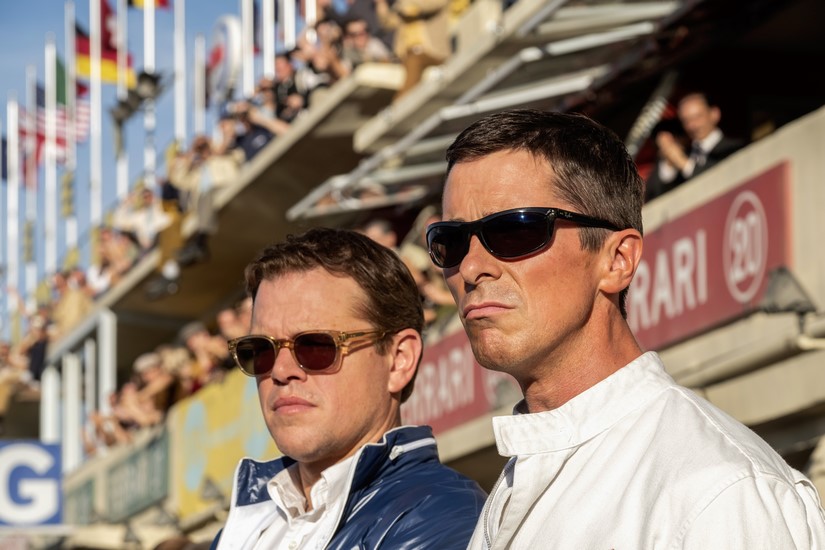
That leads to my next question: how did you use sound to support the emotion of this story?
DS: We developed this internal moment which you first see with Carroll Shelby in the ’59 Le Mans race. The scene goes into his head while he is racing. Christian Bale saw an early cut of the film and suggested that each race should have that moment. Jim [Mangold] had been thinking about it but when Christian brought it up it cemented the idea. That moment was built into Willow Springs and of course there was already one built in Le Mans. We just had to find one for Daytona. Doing that seemed to bring all these moments into what the mental state of a racecar driver would be when traveling at those speeds. As Ken says to his son in the film, when you’re going 200-miles-an-hour your whole perspective changes. We wanted to convey that in the film, using sound as a way to get into the driver’s head and that really helps the character development of Ken Miles.
We knew from the beginning that we needed to make this something other than a loud racing film.
PM: We knew from the beginning that we needed to make this something other than a loud racing film. For a lot of those race sequences, it was about what we were going to take out and therefore featuring (or exposing) other sounds there. That became more important than what we were adding in. it was a constant dance between effects and music.
The Le Mans sequence was so long that we had to break it up into four chapters and determine how that emotional roller coaster ride and raw energy were going to develop throughout the entire race.
DG: I agree. At the end of Le Mans, when Ken is making his big decision, we’re with him in the car. He’s just done the perfect lap and he’s screaming down the Mulsanne Straight and there’s the slow pullout of the engine sounds and revealing rattles and suspension as music takes over. I always liked the way that all played. You see the road ahead as Ken’s racing down that long straightaway but sonically we’re going in a completely different direction until Ken changes gears and you hear the slowdown of the engine and music takes us through the end of the sequence.
Want to know more about the sound of Ford v Ferrari? Check out The Tonebenders great audio interview below:
What was the most challenging scene for sound? Why?
DS: Getting all of these cars to sound like individual characters and getting all the engines to perform the way they should sonically, for me, that was a real challenge. We didn’t want it to sound like a library. We wanted to make sure we had the real cars. And we didn’t want to bombard people with just engines the whole time because there was a story to be told that is larger than the individual races themselves. There is a canvas that we are painting with these two men and their friendship. We wanted to make sure that the cars didn’t overpower the film. We wanted it to feel real.
… we didn’t want to bombard people with just engines the whole time because there was a story to be told that is larger than the individual races themselves.
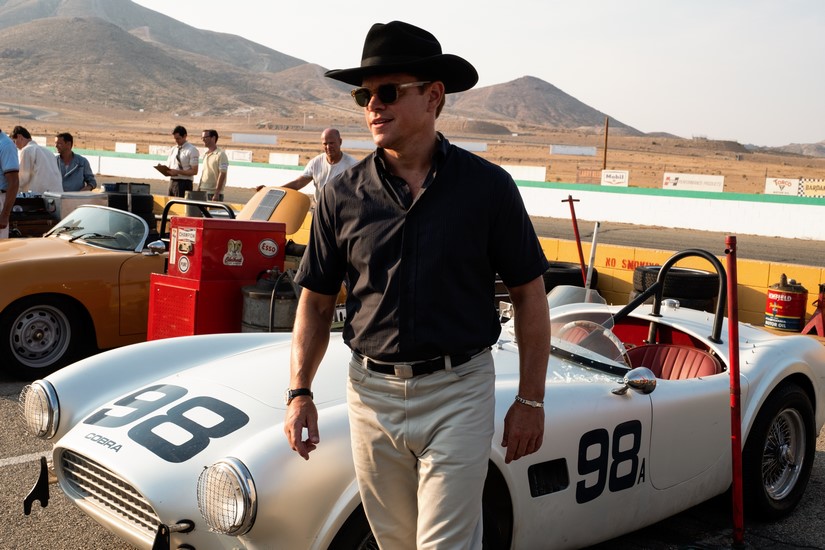
What scene went through the most evolution mix-wise?
DG: Le Mans went through a lot of changes as we shaped things. The way the racers walk to their cars at the beginning of the race, we played with that on the stage. We tried and experimented with that. Jim [Mangold] is extremely creative on the dub stage. It’s very exciting to work with him in that way. He’ll come up with an idea and we’ll try to achieve that very quickly and successfully and that is a challenge sometimes.
The sequence in Le Mans when Ken and the Ferrari are playing chicken with each other, the way those engines build, you’re feeling those two cars at the peak of their RPMs. They’re screaming down the road but you’re still feeling the differences between the two cars.
Jim [Mangold] is extremely creative on the dub stage. It’s very exciting to work with him in that way. He’ll come up with an idea and we’ll try to achieve that very quickly and successfully and that is a challenge sometimes.
DS: Dave is right. Jim is very creative on the dub stage. He’ll rethink something and throw out new ideas and we’ll try it. It might not work but if it does it’s a whole new approach to things. He does that on a regular basis and so we are all ready to go whenever he walks in the room; ready for what is next.
One of the challenges was not knowing what was coming once we got to the dub stage, but neither did Jim. He’s inspired and that’s the great thing about working with Jim. He is inspired and he inspires us.
PM: The end result is better collectively then anything an individual (one of us) would come up with, or that Jim alone would come up with. It’s very collaborative working with Jim on the stage. Fortunately, we’ve all worked with him on several films. There’s a shorthand between us all now. As Dave and Don said, Jim comes up with fantastic ideas, sometimes out of left field and you have to be prepared to put it together quickly to see if the concept even works. If it does, then you can refine it and put the sequence together. Sometimes you think you are signed off on a sequence and Jim will come in with a new idea for when to bring in the music or when to bring in car effects. As the idea evolves, you know if it is better than what you had or if it’s going to be thrown away and we start again. But that evolution is really exciting to work on as a team.
The opening of Le Mans was challenging, as Ken and the racers walk through the tunnel towards their cars. We wanted to express his nervousness and anticipation for what’s outside that tunnel. Then we expose the race and the pits and the reality of it. After that, I like how we go inside Ken’s head as the clock counts down, and the explosion and excitement of the beginning of the race with the accidents that happen.
Le Mans — as a sequence — was challenging because we couldn’t just make it full-on all the time. There had to be peaks and valleys emotionally and sonically.
Le Mans — as a sequence — was challenging because we couldn’t just make it full-on all the time. There had to be peaks and valleys emotionally and sonically. There was a lot of experimentation, with us watching the entire sequence to see if it worked when we moved a music cue or if we featured more of the cars at a specific point. Does that make it oppressive sonically? We had numerous questions that we couldn’t answer until we watched the entire sequence. So several times we had to put together the sequence and then watch through all 25-minutes and come up with a new plan or a tweak for what we had just done.
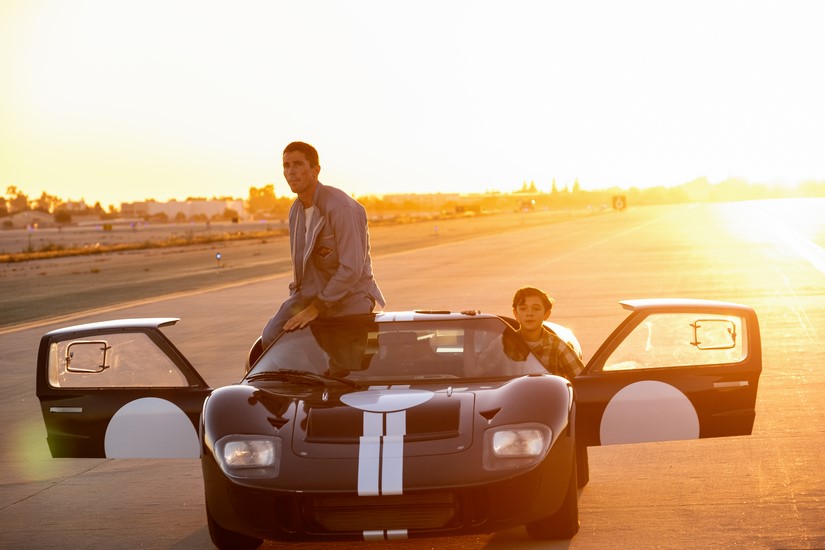
Looking at the Dolby Atmos mix specifically, was there a scene in which the Atmos surround field helped to enhance the experience?
DG: I don’t have a favorite scene for Atmos. I love the full range surround aspect of Atmos and the way it completely immerses you with sound around the room. Some of the elements I play in the Atmos speakers are winds and crowds and obvious overhead sounds. It’s tricky because you don’t want to call attention to the Atmos setup. The whole immersive thing is beautiful because it envelops you and that’s what is most useful. We can put sounds all around the audience. For the open cockpit racing at Le Mans ’59 and the Willow Springs race, we have these buffeting winds that the drivers might be dealing with and we have rain on the cars. We open up the crowds at Le Mans and put some of those above the audience. But for me, the beauty is the full range surrounds and the immersive quality that imparts.
PM: I agree with Dave. I think Atmos gives us more flexibility than 5.1 or 7.1. The full range surrounds are great; it means we can go one step further in providing quality audio to the audience rather than featuring it as a razzle-dazzle trick. I’m more into using Atmos as a higher-quality audio tool to get the film to the audience.
DS: Atmos allows for separation between the music and the sound effects. When you have a heavy sound effects sequence that also has big music, I’m often worried that they are clashing. When you use Atmos in the proper way, you can separate the music; pull it off the screen while the sound effects play on the screen. It’s almost like you have an orchestra pit playing in the theater. I really like that. Atmos allowed us to do that, to play the engines loud and to have music driving at the same time.
Atmos allows for separation between the music and the sound effects…Atmos allowed us to play the engines loud and to have music driving at the same time.
What is something surprising you’d want other sound pros to know about your work on Ford v Ferrari?
DS: There was nothing surprising in terms of making the sound on this film. It’s what we call yeoman’s work — anybody who does any sound work in film wants to do this movie, or a movie like this where the director is fully supporting you and you are allowed to play your sounds the way you hear them in your head and the director adopts that position too because your way of approaching films is influenced by the director’s way of approaching films because you’ve worked together long enough. When you both agree at the beginning what a film is going to sound like it’s a dream come true because it’s on the page in the script and now it’s on the screen in the theater. That’s the kind of serendipity that you don’t often get. So there were no surprises here for sound; it’s just the perfect storm for sound with a sympathetic and creative director.
DG: Who loves sound…
PM: And who is a pure joy to work with.
DS: Another important thing to mention is that Fox gave us enough time to do this film. They gave us more time than I’m used to and that shows on the screen too. That helps.
PM: Don, they brought you on very early, right?
In the very beginning, we did pre-viz animatics for the races so that Jim was familiar with the sequences before he even went out and shot. The animatics of course needed sound, so as they were putting it together, they invited me in to do all the sound effects.
DS: They brought me on even before they started filming. In the very beginning, we did pre-viz animatics for the races so that Jim was familiar with the sequences before he even went out and shot. The animatics of course needed sound, so as they were putting it together, they invited me in to do all the sound effects. I did the sound effects with Jay and a couple other editors; we put together a soundtrack just for the animated version of the races. That allowed him to sense where we were going. This allowed him to refine the races before they went out and shot. I was on the film weeks before production all the way through to when we finished the film. So, I was on the film for about a year. 20th Century Fox gave me a great opportunity to do my work properly with the right amount of time and resources. I really appreciate that.


